ASUS Vivobook Pro 15 OLED (K3500) review – a budget-conscious professional device with a great display
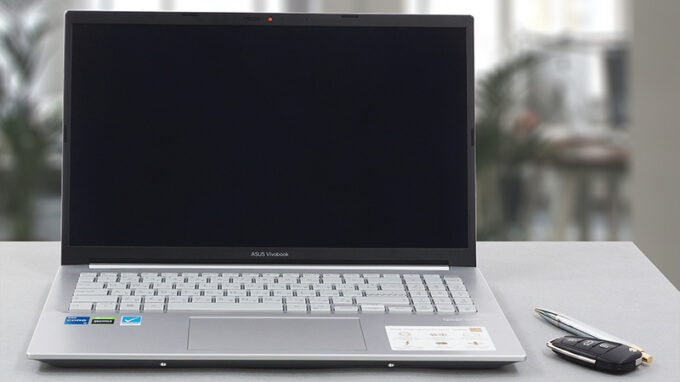 ASUS’ Vivobook family is expanding like the universe. You can pick from devices meant for every occasion. Either for casual Web browsing or for more content-creating-related stuff. In this case, the Vivobook Pro 15 OLED (K3500) is a mix of both. It is inexpensive, yet offers 35W Tiger Lake processors, and an optional RTX 3050 graphics card.
ASUS’ Vivobook family is expanding like the universe. You can pick from devices meant for every occasion. Either for casual Web browsing or for more content-creating-related stuff. In this case, the Vivobook Pro 15 OLED (K3500) is a mix of both. It is inexpensive, yet offers 35W Tiger Lake processors, and an optional RTX 3050 graphics card.
As you can imagine, a key selling point of this laptop is its OLED display. In theory, this should allow the laptop to greatly outperform most of its competition. Of course, we take nothing for granted, and you will find our test results further in the review.
Like every brand that wants to appeal to young people, ASUS offers you some options when it comes to the color of your Vivobook laptop. So, let’s not waste more time, and take the device out of its package.
You can check the prices and configurations in our Specs System: https://laptopmedia.com/series/asus-vivobook-pro-15-oled-k3500/
Contents
Specs Sheet
- Display
- 15.6”, FHD (1920 x 1080), OLED
- HDD/SSD
- up to 1032GB SSD
- M.2 Slot
- 1x 2280 M.2 NVMe slot See photo
- RAM
- up to 16GB
- OS
- Windows 11 Home, Windows 11 Pro, Windows 10 Home
- Battery
- 63Wh, 3-cell
- Body material
- Plastic / Polycarbonate, Aluminum
- Dimensions
- 359.8 x 235.3 x 18.9 ~ 19.9 mm (14.17" x 9.26" x 0.74")
- Weight
- 1.65 kg (3.6 lbs)
- Ports and connectivity
- 2x USB Type-A
- 2.0
- 1x USB Type-A
- 3.2 Gen 1 (5 Gbps)
- 1x USB Type-C
- Thunderbolt 4, Power Delivery (PD), DisplayPort
- HDMI
- 1.4
- Card reader
- MicroSD
- Ethernet LAN
- Wi-Fi
- 802.11ax
- Bluetooth
- 5.0
- Audio jack
- 3.5mm Combo Jack
- Features
- Fingerprint reader
- optional
- Web camera
- HD
- Backlit keyboard
- optional
- Microphone
- Array Microphone
- Speakers
- Speakers by Harman Kardon
- Optical drive
All ASUS VivoBook Pro 15 OLED (K3500) configurations
What’s in the box?
Inside the package, we found some paperwork, a 120W power adapter, and a letterbox full of stickers.
Design and construction
Both options here are definitely stylish. You can choose between a “Quiet Blue” or “Cool Silver” outfit, both of which come with a metal lid cover, and plastic body. Interestingly, we found the body to be stronger than the lid in terms of flex. Nevertheless, the laptop looks simplistic, as the ASUS Vivobook logo is the only thing that finds its way on the lid in the form of a plaque.
Thankfully, this machine is really compact, as it weighs only 1.65 kg and has a profile of 18.9mm. In addition, the lid can be opened with a single hand. Here, we find a glossy display with an 84% screen-to-body ratio, and size bezels that are around 7mm thick. Even the top and bottom ones are thinner than usual. Plus, there is an HD Web camera with its own privacy shutter.
Then, let’s check out the keyboard. It has a backlight and a NumberPad, which is super neat. Interestingly, the power button is placed in the top right corner and sports an optional fingerprint reader, which makes it a bit shallower than the rest of the keys. Ultimately, the keyboard feels comfortable, with its decent key travel, and clicky feedback that offers some resistance on press.
Next comes the touchpad, which supposedly features a glass cover. This makes it extremely smooth, while the tracking is decent-enough.
Moving to the bottom panel, we see a quite sizable ventilation grill, as well as two speaker cutouts. The hot air, on the other hand, is pushed out through two vents on the back of the device.
Ports
On the left side of the notebook, you will find two USB Type-A 2.0 ports. Then, on the right, there is the power plug, a USB Type-A 3.2 (Gen. 1) port, a Thunderbolt 4 connector, a MicroSD card slot, and an audio jack.
Disassembly, upgrade options and maintenance
To get inside this device, you need to undo 10 Torx-head screws, three of which are captive. Then, pry the bottom panel with a plastic tool and remove it from the chassis.
Here, we see a 63Wh battery pack. To continue the disassembly, unplug the battery connector. Then, undo all 6 Phillips-head screws, holding it to the laptop. After that, you will be able to lift it away.
Right above the CPU, you will find the memory chips. Yes, this means the RAM is soldered and is not upgradable. On the bright side, you can configure the laptop with up to 16GB. Additionally, there is a single M.2 PCIe x4 slot for storage upgrades.
In terms of cooling, there are two heat pipes, shared between the processor and the graphics card. Moreover, two fans blow the heat away from the device.
Display quality
ASUS Vivobook Pro 15 OLED (K3500) is equipped with an AMOLED panel, Samsung ATNA56YX03-0 (SDC4161). Its diagonal is 15.6-inch (39.62 cm), and the resolution – 1920 x 1080p. Additionally, the screen ratio is 16:9, the pixel density – 142 ppi, their pitch – 0.18 x 0.18 mm. The screen can be considered Retina when viewed from at least 60 cm (from this distance, the average human eye can’t see the individual pixels).

Viewing angles are comfortable. We offer images at different angles to evaluate the quality.

Also, a video with locked focus and exposure.
The maximum measured brightness is 407 nits (cd/m2) in the middle of the screen (HDR off). The Correlated Color Temperature on a white screen and at maximum brightness is 6600K – almost matching the 6500K temperature for sRGB.
In the illustration below you can see how the display performs from a uniformity perspective.
Values of dE2000 over 4.0 should not occur, and this parameter is one of the first you should check if you intend to use the laptop for color-sensitive work (a maximum tolerance of 2.0 ). The contrast ratio here is incomparably better than that of the IPS and TN panels and is mathematically infinite.
To make sure we are on the same page, we would like to give you a little introduction to the sRGB color gamut and the Adobe RGB. To start, there’s the CIE 1976 Uniform Chromaticity Diagram that represents the visible specter of colors by the human eye, giving you a better perception of the color gamut coverage and the color accuracy.
Inside the black triangle, you will see the standard color gamut (sRGB) that is being used by millions of people on HDTV and on the web. As for the Adobe RGB, this is used in professional cameras, monitors, etc for printing. Basically, colors inside the black triangle are used by everyone and this is the essential part of the color quality and color accuracy of a mainstream notebook.
Still, we’ve included other color spaces like the famous DCI-P3 standard used by movie studios, as well as the digital UHD Rec.2020 standard. Rec.2020, however, is still a thing of the future and it’s difficult for today’s displays to cover that well. We’ve also included the so-called Michael Pointer gamut, or Pointer’s gamut, which represents the colors that naturally occur around us every day.
The yellow dotted line shows ASUS Vivobook Pro 15 OLED (K3500)’s color gamut coverage.
Its display covers 100% of the sRGB/ITU-R BT.709 (web/HDTV standard) in CIE1976 and 100% of DCI-P3 providing a punchy and vibrant image.
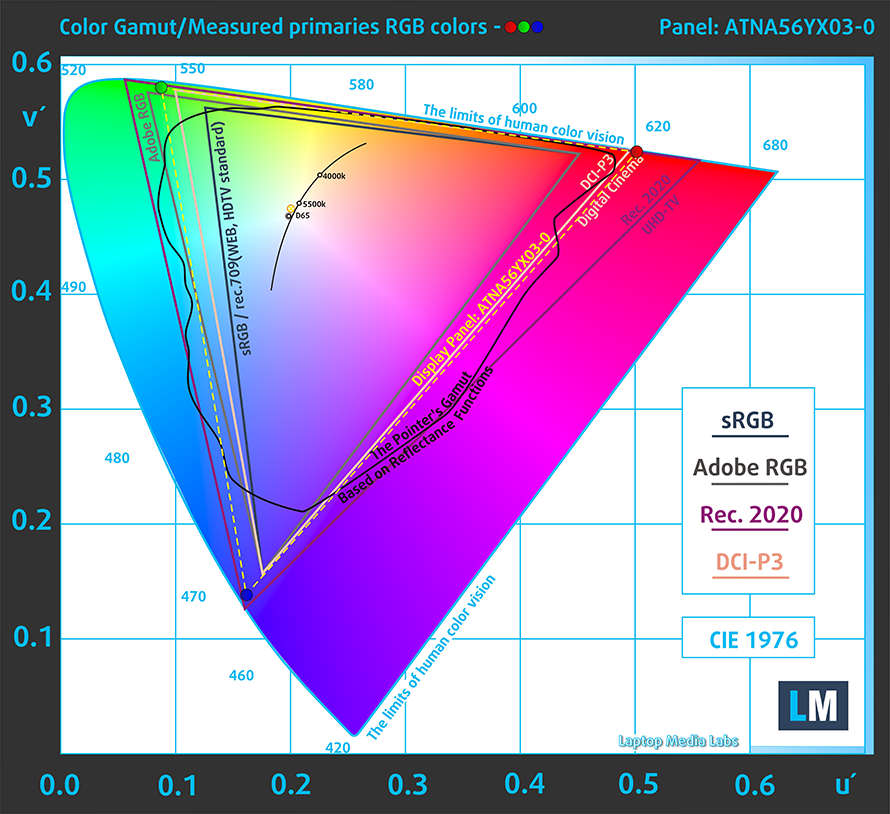
Our “Design and Gaming” profile delivers optimal color temperature (6500K) at 140 cd/m2 luminance and sRGB gamma mode.
We tested the accuracy of the display with 24 commonly used colors like light and dark human skin, blue sky, green grass, orange, etc. You can check out the results in factory condition and also, with the “Design and Gaming” profile.
Below you can compare the scores of ASUS Vivobook Pro 15 OLED (K3500) with the default settings (left), and with the “Gaming and Web design” profile (right).
You can also see a comparison between the default settings (left), and the “Gaming and Web design profile” (right) in the P3-D65 color space.
The next figure shows how well the display is able to reproduce really dark parts of an image, which is essential when watching movies or playing games in low ambient light.
The left side of the image represents the display with stock settings, while the right one is with the “Gaming and Web Design” profile activated. On the horizontal axis, you will find the grayscale, and on the vertical axis – the luminance of the display. On the two graphs below you can easily check for yourself how your display handles the darkest nuances but keep in mind that this also depends on the settings of your current display, the calibration, the viewing angle, and the surrounding light conditions.
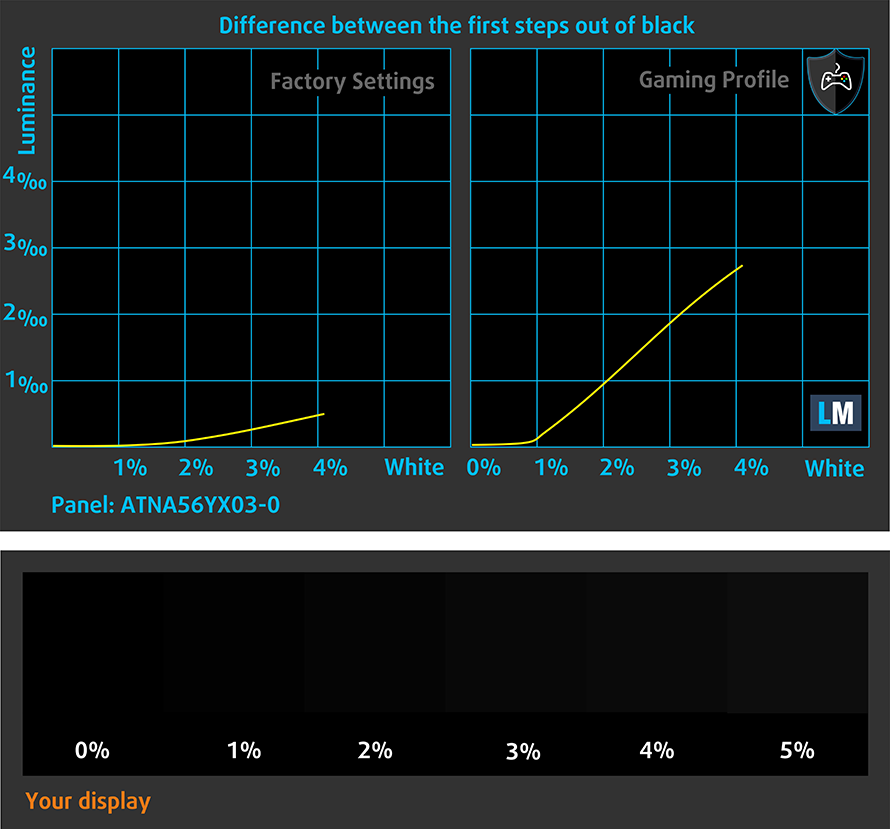
Response time (Gaming capabilities)
We test the reaction time of the pixels with the usual “black-to-white” and “white-to-black” method from 10% to 90% and vice versa.
We recorded Fall Time + Rise Time = 3 ms – insane speed.

Health impact – PWM / Blue Light
PWM (Screen flickering)
Pulse-width modulation (PWM) is an easy way to control monitor brightness. When you lower the brightness, the light intensity of the backlight is not lowered, but instead turned off and on by the electronics with a frequency indistinguishable to the human eye. In these light impulses, the light/no-light time ratio varies, while brightness remains unchanged, which is harmful to your eyes. You can read more about that in our dedicated article on PWM.
Unfortunately, ASUS Vivobook Pro 15 OLED (K3500)’s panel uses low-frequency PWM for brightness adjustment up until 80 nits. Afterwards, we detected small pulsations, which makes the display relatively safe in this aspect (after 80 nits).

Blue light emissions
Installing our Health-Guard profile not only eliminates PWM but also reduces the harmful Blue Light emissions while keeping the colors of the screen perceptually accurate. If you’re not familiar with the Blue light, the TL;DR version is – emissions that negatively affect your eyes, skin, and your whole body. You can find more information about that in our dedicated article on Blue Light.
Buy our profiles
Since our profiles are tailored for each individual display model, this article and its respective profile package are meant for ASUS Vivobook Pro 15 OLED (K3500) configurations with 15.6″ Samsung ATNA56YX03-0 (SDC4161) (1920 x 1080p) AMOLED panel.
*Should you have problems with downloading the purchased file, try using a different browser to open the link you’ll receive via e-mail. If the download target is a .php file instead of an archive, change the file extension to .zip or contact us at [email protected].
Read more about the profiles HERE.
In addition to receiving efficient and health-friendly profiles, by buying LaptopMedia's products you also support the development of our labs, where we test devices in order to produce the most objective reviews possible.

Office Work
Office Work should be used mostly by users who spend most of the time looking at pieces of text, tables or just surfing. This profile aims to deliver better distinctness and clarity by keeping a flat gamma curve (2.20), native color temperature and perceptually accurate colors.

Design and Gaming
This profile is aimed at designers who work with colors professionally, and for games and movies as well. Design and Gaming takes display panels to their limits, making them as accurate as possible in the sRGB IEC61966-2-1 standard for Web and HDTV, at white point D65.

Health-Guard
Health-Guard eliminates the harmful Pulse-Width Modulation (PWM) and reduces the negative Blue Light which affects our eyes and body. Since it’s custom tailored for every panel, it manages to keep the colors perceptually accurate. Health-Guard simulates paper so the pressure on the eyes is greatly reduced.
Get all 3 profiles with 33% discount
Sound
ASUS Vivobook Pro 15 OLED (K3500)’s Harman Kardon speakers produce a sound of very good quality. Its low, mid, and high tones are clear of deviations.

Drivers
All drivers and utilities for this notebook can be found here: https://www.asus.com/us/Laptops/For-Home/Vivobook/Vivobook-Pro-15-OLED-K3500-11th-Gen-Intel/HelpDesk_Download/
Battery
Now, we conduct the battery tests with the Windows Better performance setting turned on, screen brightness adjusted to 120 nits, and all other programs turned off except for the one we are testing the notebook with. The 63Wh battery here lasts for 10 hours and 33 minutes of Web browsing, or 8 hours and 51 minutes of video playback.
In order to simulate real-life conditions, we used our own script for automatic web browsing through over 70 websites.

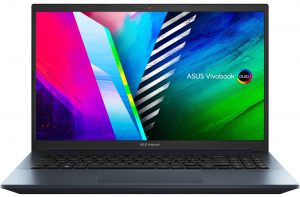
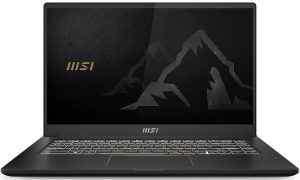
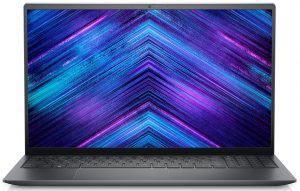
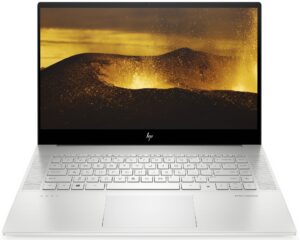
For every test like this, we use the same video in HD.





CPU options
This notebook comes with a choice of two Tiger Lake H35 processors. They are the Core i5-11300H and the Core i7-11370H. They show virtually no difference in gaming, as you can see in our dedicated article on the matter.
Results are from the Cinebench R23 CPU test (the higher the score, the better)
Results are from our Photoshop benchmark test (the lower the score, the better)
GPU options
In terms of graphics, you can choose between the GTX 1650 Max-Q, and the RTX 3050.
Results are from the 3DMark: Time Spy (Graphics) benchmark (higher the score, the better)
Results are from the 3DMark: Fire Strike (Graphics) benchmark (higher the score, the better)
Results are from the 3DMark: Wild Life benchmark (higher the score, the better)
Results are from the Unigine Superposition benchmark (higher the score, the better)
Gaming tests
| Metro Exodus | Full HD, Low (Check settings) | Full HD, High (Check settings) | Full HD, Extreme (Check settings) |
|---|---|---|---|
| Average FPS | 58 fps | 38 fps | 18 fps |
| Borderlands 3 | Full HD, Medium (Check settings) | Full HD, High (Check settings) | Full HD, Badass (Check settings) |
|---|---|---|---|
| Average fps | 67 fps | 49 fps | 67 fps |

| Shadow of the Tomb Raider (2018) | Full HD, Lowest (Check settings) | Full HD, Medium (Check settings) | Full HD, High (Check settings) |
|---|---|---|---|
| Average | 94 fps | 66 fps | 57 fps |

| Tom Clancy’s Ghost Recon Wildlands | Full HD, Medium (Check settings) | Full HD, High (Check settings) | Full HD, Very High (Check settings) |
|---|---|---|---|
| Average fps | 66 fps | 61 fps | 54 fps |
Temperatures and comfort
Max CPU load
In this test we use 100% on the CPU cores, monitoring their frequencies and chip temperature. The first column shows a computer’s reaction to a short load (2-10 seconds), the second column simulates a serious task (between 15 and 30 seconds), and the third column is a good indicator of how good the laptop is for long loads such as video rendering.
Average core frequency (base frequency + X); CPU temp.
| Intel Core i5-11300H (35W TDP) | 0:02 – 0:10 sec | 0:15 – 0:30 sec | 10:00 – 15:00 min |
|---|---|---|---|
| ASUS Vivobook Pro 15 OLED (K3500) | 3.76 GHz (B+21%) @ 95°C @ 56W | 3.54 GHz (B+14%) @ 94°C @ 47W | 3.57 GHz (B+15%) @ 95°C @ 49W |
| Huawei MateBook 14s | 3.44 GHz (B+11%) @ 74°C @ 40W | 3.36 GHz (B+8%) @ 92°C @ 40W | 2.93 GHz (B-5%) @ 74°C @ 28W |
| Lenovo IdeaPad Gaming 3i (15″, 2021) | 3.99 GHz @ 84°C @ 59W | 3.99 GHz @ 92°C @ 60W | 3.87 GHz @ 94°C @ 56W |
| Acer Swift 3 (SF316-51) | 3.38 GHz @ 94°C @ 38W | 3.22 GHz @ 93°C @ 35W | 3.00 GHz @ 93°C @ 30W |
The Vivobook Pro 15 OLED (K3500) performs well in the stress test, although it stays behind the IdeaPad Gaming 3i in terms of clock speeds. However, it’s good to see that the “Performance” preset does what it’s intended to do – give you the best this laptop is capable of.
Real-life gaming
| NVIDIA GeForce RTX 3050 | GPU frequency/ Core temp (after 2 min) | GPU frequency/ Core temp (after 30 min) | GPU frequency/ Core temp (Max Fan) |
|---|---|---|---|
| ASUS Vivobook Pro 15 OLED (K3500) | 1605 MHz @ 69°C @ 49W | 1610 MHz @ 68°C @ 50W | – |
| Dell Vostro 15 7510 | 1729 MHz @ 74°C @ 64W | 1710 MHz @ 78°C @ 65W | – |
| ASUS VivoBook Pro 16X OLED (N7600) | 1576 MHz @ 68°C @ 50W | 1571 MHz @ 69°C @ 50W | – |
| Lenovo IdeaPad 5 Pro (16″) | 1651 MHz @ 72°C @ 55W | 1636 MHz @ 75°C @ 55W | – |
| HP Victus 16 (16-e0000) | 1824 MHz @ 73°C @ 75W | 1814 MHz @ 73°C @ 75W | 1822 MHz @ 73°C @ 75W |
| MSI Katana GF66 | 1675 MHz @ 73°C @ 60W | 1660 MHz @ 78°C @ 60W | 1699 MHz @ 67°C @ 60W |
Interestingly, this notebook manages to maintain its GPU’s 50W TGP budget and still runs at similar clock speeds, and lower temperatures than the IdeaPad 5 Pro (16″), which runs at 5W higher TGP.
Gaming comfort
Also, the noise during gaming is not too high, while the hotspot of the keyboard didn’t pass 37°C.

Verdict
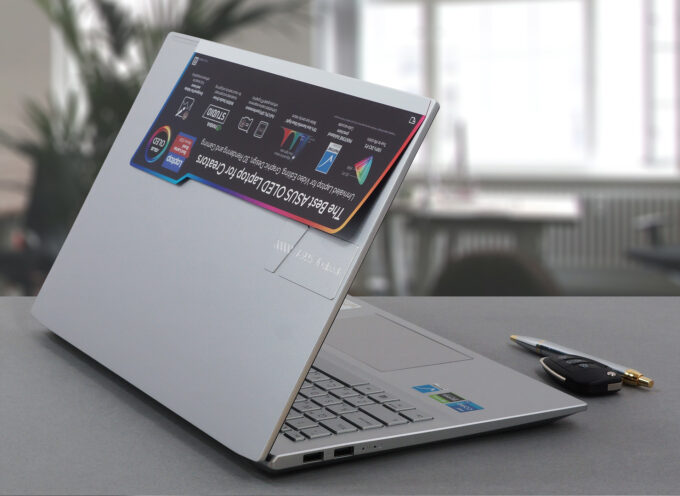 We can comfortably say that the Vivobook Pro 15 OLED (K3500) delivers on its promises. Indeed, one of the most expensive items inside it is the display. This is why we see two USB Type-A 2.0 ports, instead of 3.2. However, you still get Thunderbolt 4 connection, so we think that the compromise is definitely worth it.
We can comfortably say that the Vivobook Pro 15 OLED (K3500) delivers on its promises. Indeed, one of the most expensive items inside it is the display. This is why we see two USB Type-A 2.0 ports, instead of 3.2. However, you still get Thunderbolt 4 connection, so we think that the compromise is definitely worth it.
Now, the lack of memory expansion options is a bit of a bummer, but if you configure your machine with the 16GB offer, you should be good to go for the next couple of years.
Battery life is on point, as the 63Wh unit lasts for 10 hours and a half of Web browsing, or around 9 hours of video playback. This should allow you to get through an entire workday of light use without the need for a charger.
ASUS Vivobook Pro 15 OLED (K3500)’s AMOLED panel has a Full HD resolution, high maximum brightness, and comfortable viewing angles. The nature of the panel means that you get a practically infinite contrast ratio and a super-fast pixel response time. In addition, it fully covers both the sRGB and the DCI-P3 color gamuts, which makes the image look really attractive.
When it comes to performance, we think that the device will definitely satisfy your needs. The 35W Tiger Lake processors work really well with photoshop, while the RTX 3050 will provide a healthy gaming experience while boosting your video-editing experience. Now, if you need the machine for creating video content, you will probably need a slightly more powerful CPU. Especially, if you work with 4K files. In this case, the AMD version of the laptop might be more suitable for the job. You can check our take on it HERE.
You can check the prices and configurations in our Specs System: https://laptopmedia.com/series/asus-vivobook-pro-15-oled-k3500/
Pros
- Adequate pricing
- Decent performance
- 100% sRGB and DCI-P3 coverage (Samsung ATNA56YX03-0 (SDC4161))
- HDR 600 support and infinite contrast ratio (Samsung ATNA56YX03-0 (SDC4161))
- MicroSD card slot + Thunderbolt 4
- Optional Wi-Fi 6 and fingerprint reader
- Extracts the best out of the hardware
Cons
- PWM usage (Samsung ATNA56YX03-0 (SDC4161))
- Soldered memory
- Two of its three USB Type-A ports are of 2.0 speeds
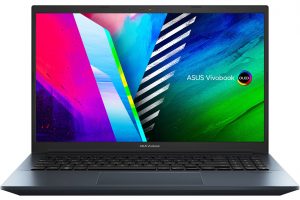


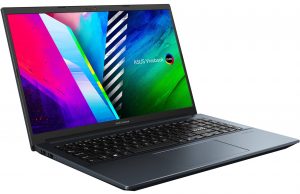
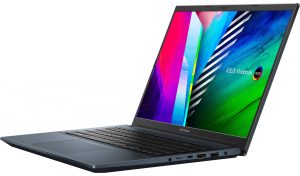
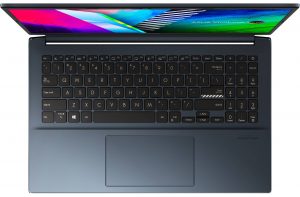

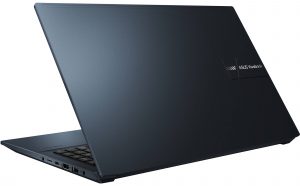
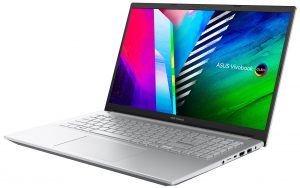
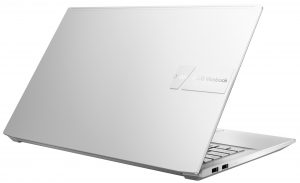


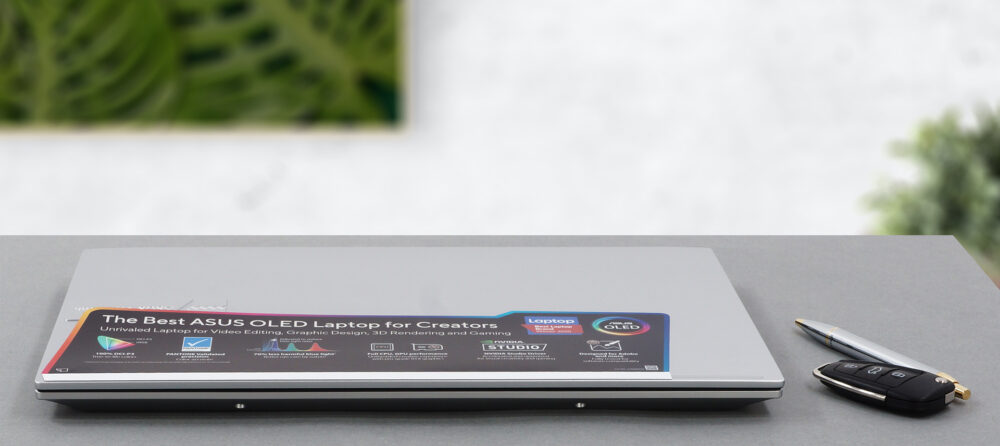
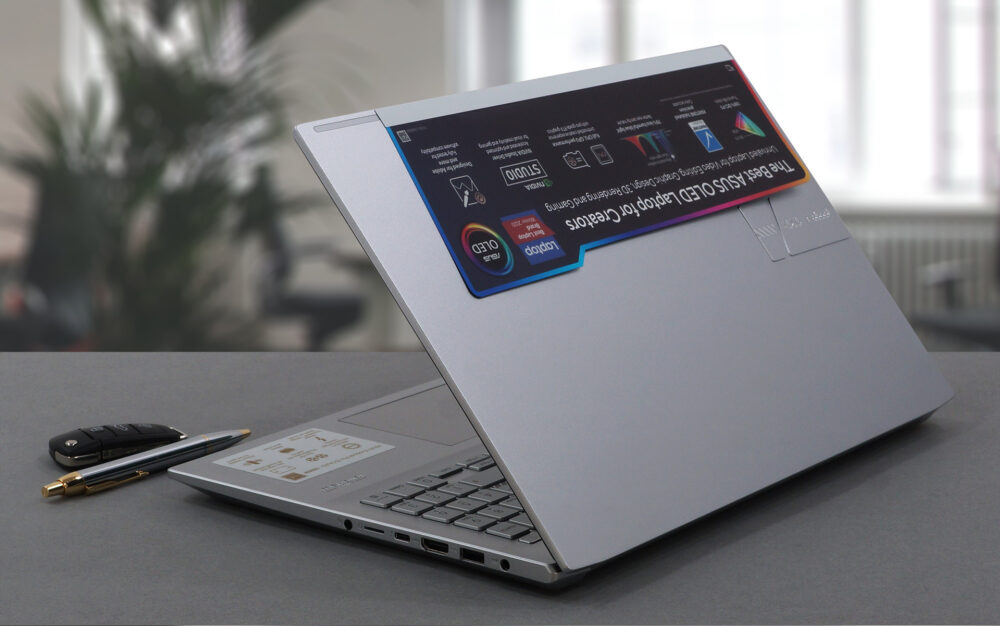






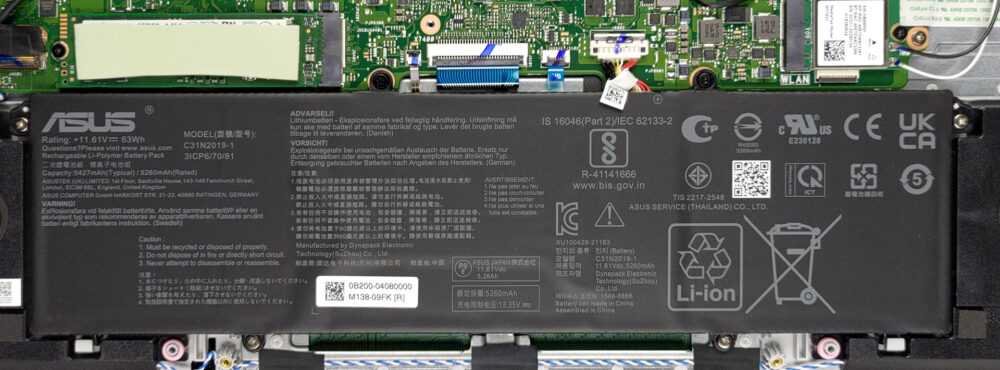
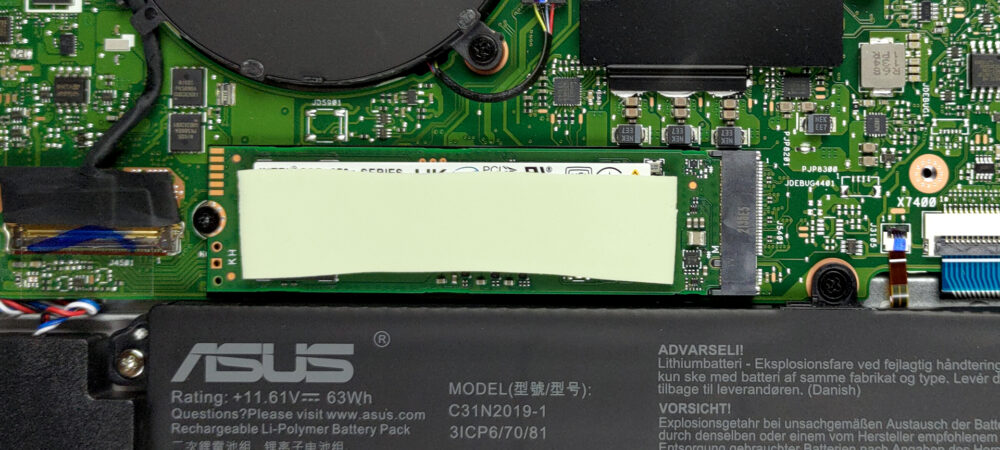





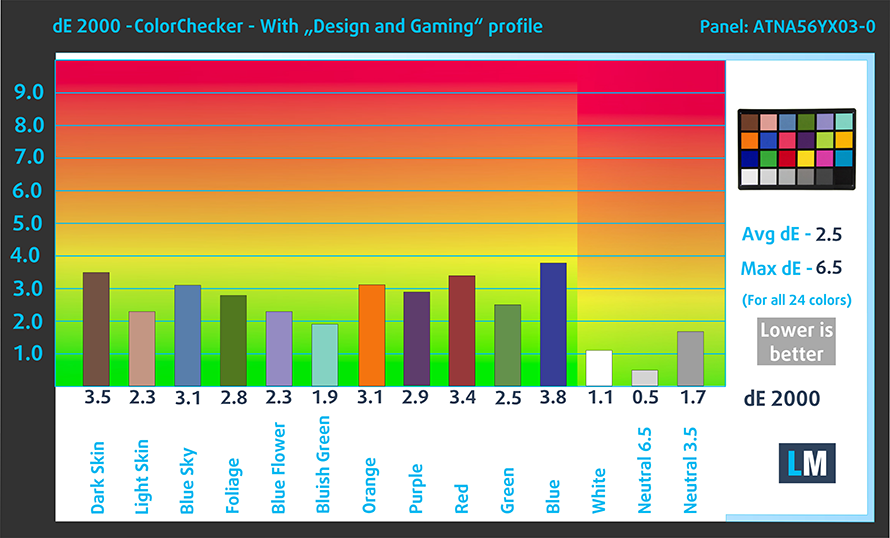

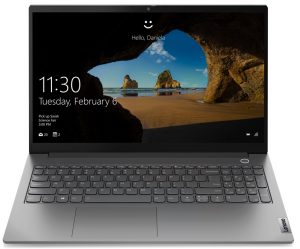
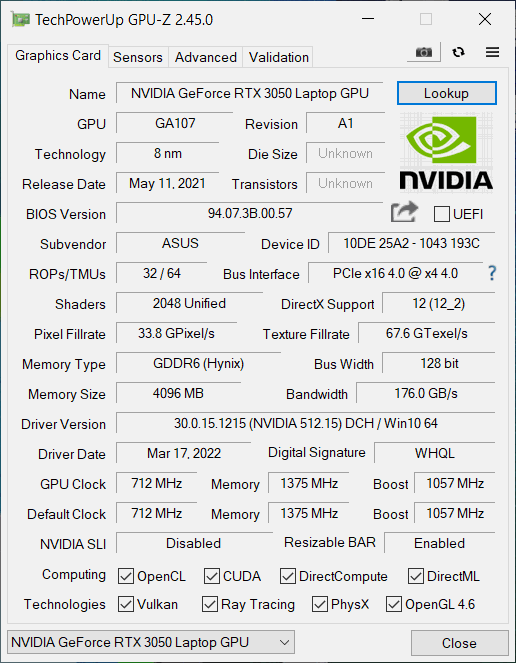









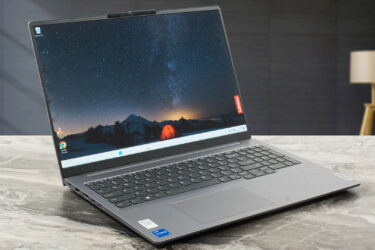
Esta laptop puede aprovechar una SSD nvme tipo PCI express 4.0 x4?
The version that you reviewed is the 8 or 16GB version, I read the entire article and cannot find this information, thank you!